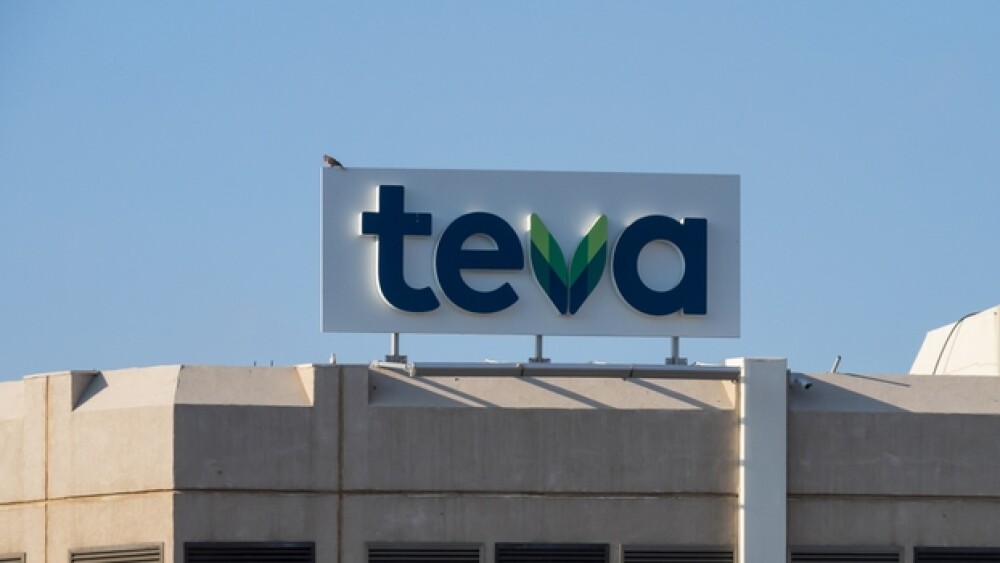The company’s efforts appear to be working, as it reported fourth-quarter results that exceeded expectations. Company shares popped 9.1% at the news.
photobyphm / Shutterstock
Israel-based Teva Pharmaceuticals is the largest generic drug company in the world, but generic drug prices over the last couple years have forced the company into a major restructuring, shifting some of its energies into the more lucrative biologics market. All that effort appears to be working, as the company reported fourth-quarter results that exceeded expectations. Company shares popped 9.1% at the news.
The company reported $4.5 billion in revenue for the quarter and $16.9 billion for the full year. It decreased its spending by $3 billion and reported rapid growth for its Austedo (deutetrabenazine) for tardive dyskinesia and Huntington’s disease chorea. The company also was optimistic that it would be able to finalize a settlement in an opioid lawsuit in the U.S.
“In 2019, we made great strides towards positioning Teva for renewed growth by completing our two-year restructuring plan, reducing our cost base by more than $3 billion, and reducing our net debt by more than $9 billion, all while maintaining our global leadership in generics, serving around 200 million patients every day,” said Kare Schultz, the company’s president and chief executive officer.
He went on to say, “Our key growth products met major milestones in 2019, including the launch of Ajovy in Europe, continued strong growth for Austedo, and the successful launch of our first biosimilar Truxima in North America. In 2020, we expect to see continued growth for Ajovy, Austedo and our biosimilars.”
A biosimilar is basically a generic version of a biologic drug. In the case of Truxima, it is indicated for adults with Non-Hodgkin’s Lymphoma (NHL) alone or with chemotherapy, and Chronic Lymphocytic Leukemia (CLL) with fludarabine and cyclophosphamide. It is a biosimilar of Genentech and Biogen’s Rituxan (rituximab).
Although quarter revenue was up by about 1%, overall annual revenue was down 8%, but the increasing sales of the newer drugs is offsetting the falling sales of Copaxone, the company’s multiple sclerosis drug.
In the fourth quarter, Austedo sales grew 98% to $136 million. Ajovy, for migraine headaches, hit $25 million for the quarter and is expected to continue increasing.
In describing the last several years, Schulz in the conference call said, “You probably all remember that in 2017, so a bit more than two years ago, two-and-a-half years ago, we had a pretty dramatic situation. We had a debt of $34 billion and we had Copaxone going off patent worldwide. So, we were under a lot of pressure looking at a revenue loss over a couple of years, of close to $5 billion. The way to handle that was a restructuring plan that was meant to reduce our spend base by $3 billion, thereby securing cash flow to handle the debt and securing our future earnings.”
And that has apparently worked. They have shut down or divested 23 manufacturing sites, with some in the process of final closures. “We’ve had to close more than 40 offices and laboratories around the world and say goodbye to more than 13,000 employees,” Schulz said. “We managed to do this without hurting our operational capacity in any way. We are still fully operational on all the many, many products we do, 30,000 different products; many, many billions of SKUs per year.”
The debt situation is still fairly large, with $24.9 billion, but the company has refinanced and decreased spending, so it believes it will be able to continue to drive down the debt, particularly with the sales growing.
For 2020, Teva forecast adjusted Earnings Per Share (EPS) of $2.30-$2.55 and revenue of $16.6-$17 billion. Analysts have a consensus forecast of EPS of $2.47 on $17.2 billion in revenue.
Ami Fadia, an analyst with SVB Leerink, said, “We view the top line 2020 guidance as achievable with potential for further cost savings impacting the bottom line.”





